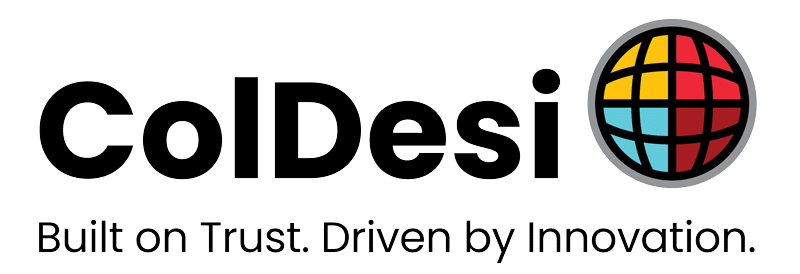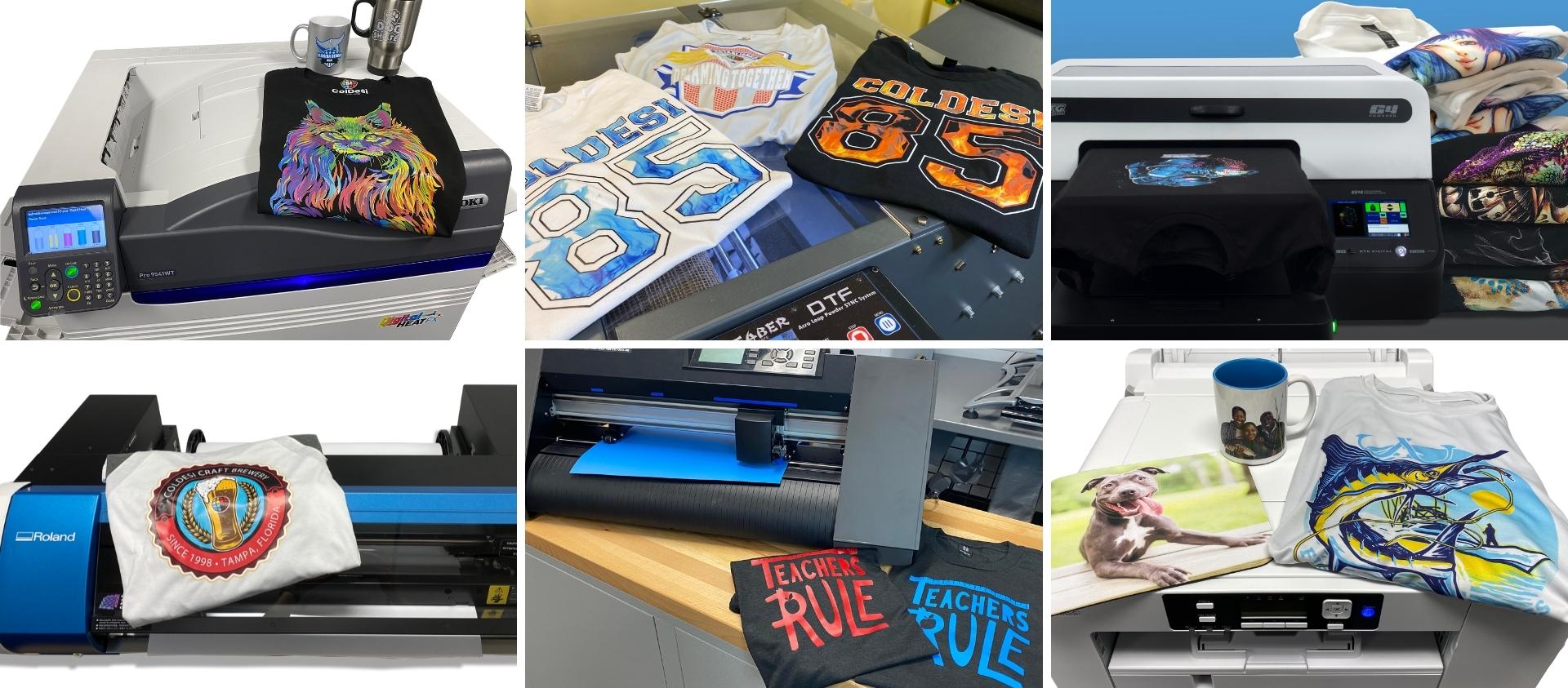So, you’re thinking about starting a custom t-shirt business. Or an embroidery one, or an Etsy store selling things you make yourself.
Then you start Googling, talking to friends, and researching what equipment you’ll need. Maybe see an ad on Facebook and get sticker shock. Or you see something that looks just too cheap to be realistic.
That’s because there are SO many answers to the question you’re asking.
A custom t-shirt printing device, including transfer printers, can start as for as little as $600 and top out at somewhere north of $500,000!
The Pros and Cons of Custom T-shirt Equipment
And each of those machines has pros and cons. Limitations and things they do very well. Which makes it particularly hard to match up the business idea in your head with the hardware you’ll need to make come true.
ColDesi has gone out of its way to ensure we have a system that will fit almost any budget. That is professionally designed and manufactured for business use. And one that has rigorous training and support because every startup needs that.
While it’s best to talk over your ideas and what you want to do with one of our Pros, this list of products, technology, prices, and payments will help you narrow down your options.
The idea below is to give you a RANGE or IDEA of how much things cost. For example, when we say “This printer is $5995, but most people spend about $8K” that means that you probably need more than just the printer.
|
Equipment Type
|
Heat Vinyl Transfer System
|
Sublimation Printers
|
Print & Cut
|
White Toner Transfer Printers
|
Direct to Garment Printers
|
Direct to Film
|
|---|---|---|---|---|---|---|
|
Brands |
Graphtec Cutter & Heat Press |
Sawgrass 500, Sawgrass 1000 |
Roland BN-20, BN-20a |
DigitalHeat FX i560, 8432, 9541 |
DTG G4 |
Roland BN20D |
|
Price |
Starting at $2,400 |
$599 - $5,995 |
$4,200 to $7,931 |
$3,995 - $13,700 |
$15,000 - $24,000 |
$7,995 - $32,443 |
|
Finance as low as |
$66 mo. |
$44 - $165 mo. |
$165 mo. |
$110 - $378 mo. |
$345 - $595 mo. |
$179 - $828 mo. |
Pricing is based on averages and subject to change.
Here’s a specific example:
The DigitalHeat FX 8432 is our most popular printer. Its lowest price might be $6,795 or so right now – it’s our Basic Bundle.
But the PRO Bundle includes supplies you’ll need and the premium Hotronix Heat Press that you’ll also need. It’s closer to $12K or $13 right now.
There’s also a Bundle priced between these 2, and more options you might want depending on your business.
On top of all that, it may surprise you to find out that the Pro Bundle is by FAR our most popular.

So.. How Much is a T-Shirt Printer?
Even just this one printer has three or more answers! And there are three different DigitalHeat FX systems – one smaller and cheaper, one larger and more expensive.
With three options for each one of those.
White Toner Transfer Printers
The DigitalHeat FX printers are white toner transfer machines.
These systems have taken the custom t-shirt market by storm in recent years because they are so versatile and attractively priced.
We’ve already discussed the price ranges above, so let’s take a look at the best thing about this technology for starting a custom t-shirt business:
Why use white toner transfer printers:
- LOW (almost no) maintenance at all
- Put white toner transfers on nearly every fabric and color
- Use the same transfer system for t-shirts, coffee mugs, and more
- The i560 and 8432 are office desktop printer size
- No liquids = no mess! They use toner, not ink.
- You can sell Transfers to other t-shirt shops
Reasons you might want to choose something else?
- Cost per print is not the lowest in this comparison
- It has more of a "feel" to it than other methods
But take a look at the rest of our comparisons for more pros and cons to each!
Another Answer: Sublimation
$599. That’s another answer to your question.
The Sawgrass SG500 is a small, 8.5”x11” desktop printer that makes transfers. You can make all kinds of things, including custom t-shirts.
If you just bought the printer online here: you would be delivered the printer. And you get some good stuff with it.
But you can’t make anything without a heat press to apply it to a shirt. Or the sheets you use to protect your heat press. Or blank shirts.
A Bundle for this comes in at around $1,600.
The Sawgrass sublimation printers can also allow you to make custom coffee mugs… but you’ll need a different heat press for that!
What’s the Difference?
The two systems we just went over cost from $599 to $11,340.
You can make custom t-shirts with both.
So why the difference?
One BIG one is that the DigitalHeat FX systems make transfers that you can heat apply to almost any fabric, any color.
Pros and Cons of Sublimation Printing
The Sublimation printer can only help you customize white or light-colored garments. And only if they are 100% polyester. And your best bet is to stick with a white poly shirt made with sublimation in mind.
The two models we compared different print sizes too. The SG500 sublimation printer can use 8.5” x 14” paper. The DigitalHeat FX 8432 can use 11” x 19” paper. When you’re printing graphics, that 119 square inches vs. 209 square inches makes a big difference to a busy shop!
Now the same goes for applying those transfers to hard goods. You can make custom tiles with the SG500 – as long as they’re white and coated for sublimation.
With the DigitalHeat FX option, you can apply to black, blue, brown, AND white tiles. Plus, you won’t need to buy sublimation-ready blanks.
Other differences include the price for supplies, with you spending less for the sublimation inks and papers, but you’re trading the ability to make customized dark shirts.
Are you beginning to see what’s wrong with the question, “How much is a t-shirt printer?”
20% Custom T-Shirt Business
One of our other VERY popular products is the Roland BN-20 and BN-20a.
Can you call it a t-shirt printer? Sure! It’s a 20” print/cut machine that will allow you to make full-color transfers specifically for apparel.
Like the DigitalHeat FX transfers, you can apply the BN-20 output to any fabric.
But between the 2, the BN-20 is a bit harder to use, and it takes more space. Also, the transfers don’t usually feel as good as the DigitalHeat FX or sublimation printers.
Why would you want to consider the Roland BN-20?
Because you can ALSO print:
- Posters
- Signs
- Stickers
- Labels
- Window Clings
- And a lot more…
So, for between about $4,200 and $7,931 (prices very subject to change) if you are in the sign or sticker business (about 80%) and want to add some custom apparel (about 20%), the Roland BN-20 is a perfect fit.
However, the BN-20 also requires regular and consistent maintenance, unlike the previous machines we’ve discussed. Plus, the supplies (rolls of printable vinyl) are cumbersome, take up room, and are expensive to ship.
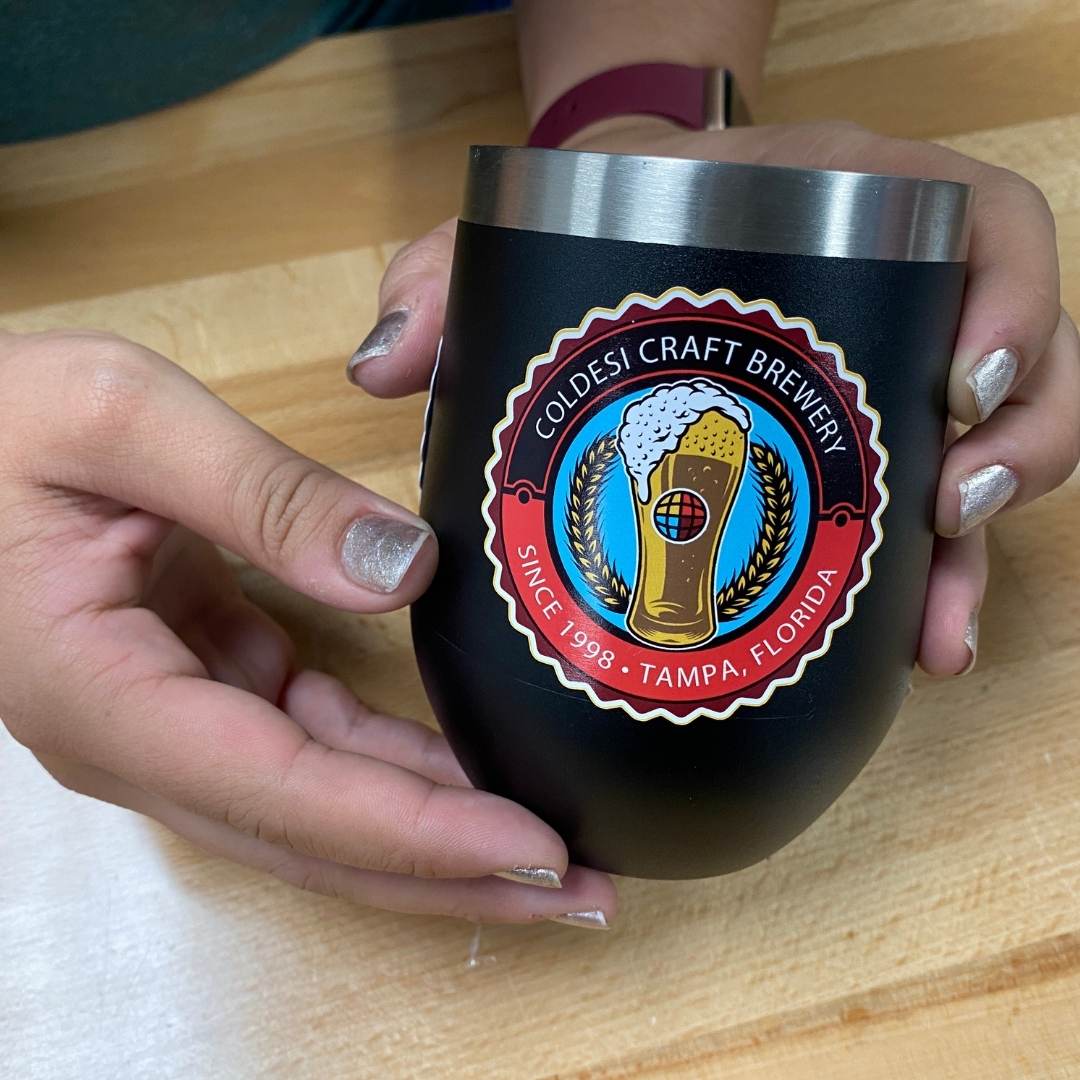
Comparing T-Shirt Transfer Printers
So far, we’ve been talking just about full-color “transfer” printers. Printers where you output your design onto one thing, then heat press the results onto another.
Here’s a great video that summarizes what we’ve compared so far:
and you can find more information on comparing just these three printers in this article.
But there ARE even more options!
Best Looking T-Shirt Business
There’s something special about Direct to Garment printing.
You just won’t find anything that gives you a more beautiful print, faster and for less cost per print.
And one reason for that is that it’s a DIRECT to t-shirt printer.
You load a t-shirt onto a sliding platen that gets automatically pulled into the printer. Ink is then jetted onto the t-shirt to create the image.
What you may not notice about the transfer printers we’ve gone over so far is that transfers have sharp edges. That means that any picture or design will end hard at the edge of the transfer.
The other things that transfers don’t always do well are transparency and blended colors.
A few examples: Think about smoke rising from a campfire. A sunset that colorfully fades into the sky. Fantastic on direct to garment printing. Not fantastic on transfers.
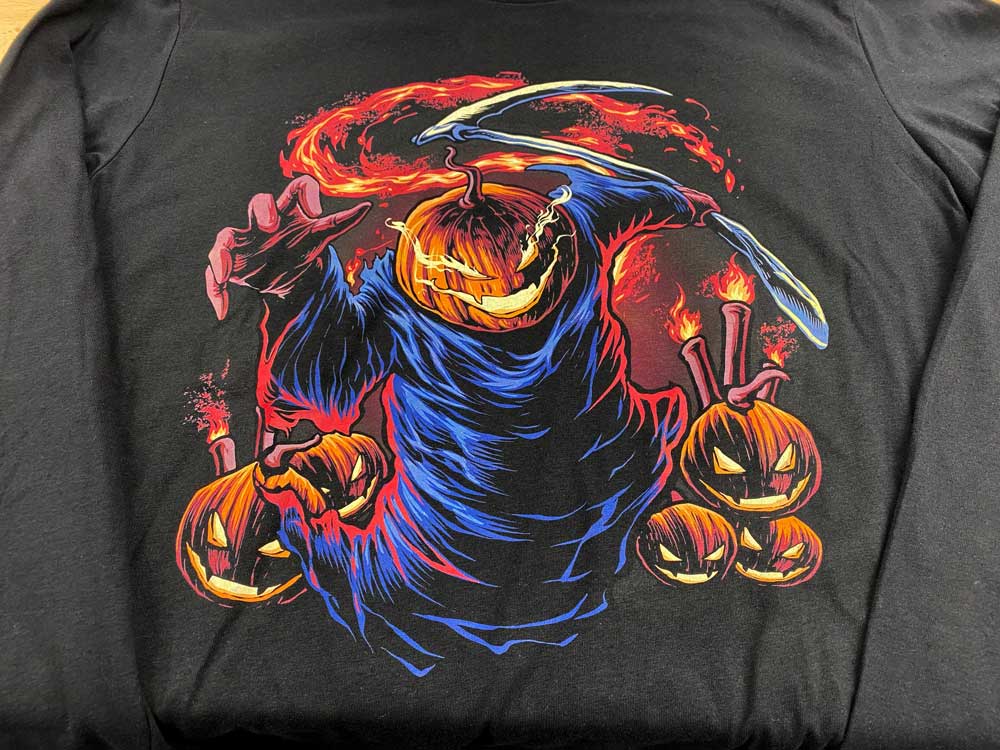
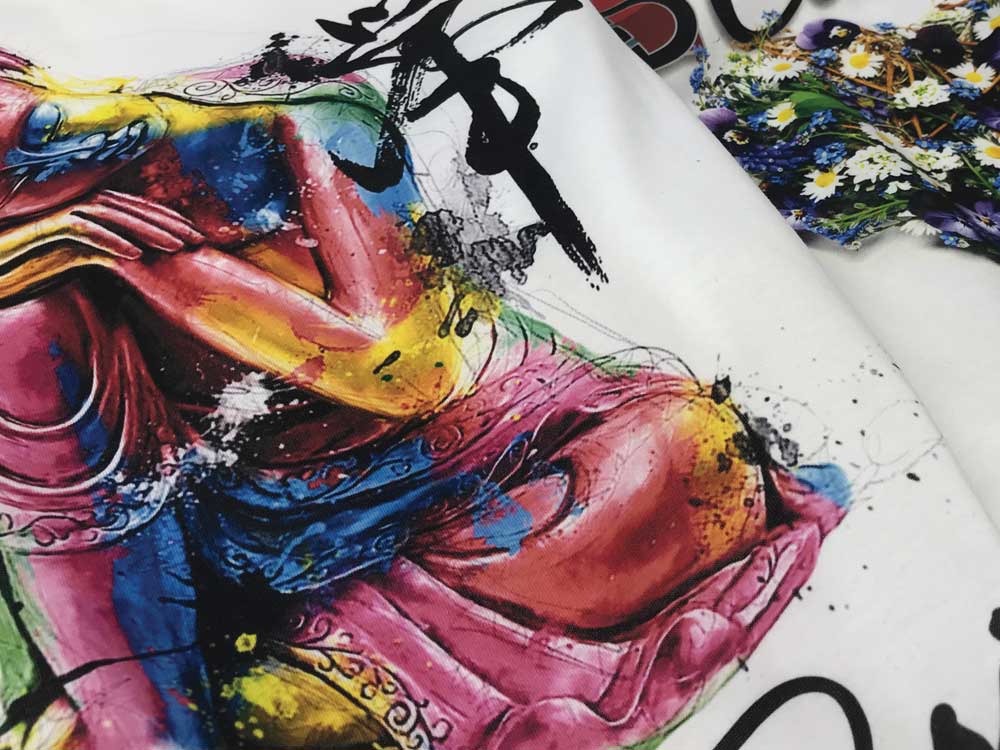
Significant Advantages to a direct to garment t-shirt printer:
- Best looking image. Period.
- Images that fade to nothing. For example: smoke.
- No hard edges to your image
- Low cost per print
- FEELS great - not plasticky
- Lasts a LONG TIME
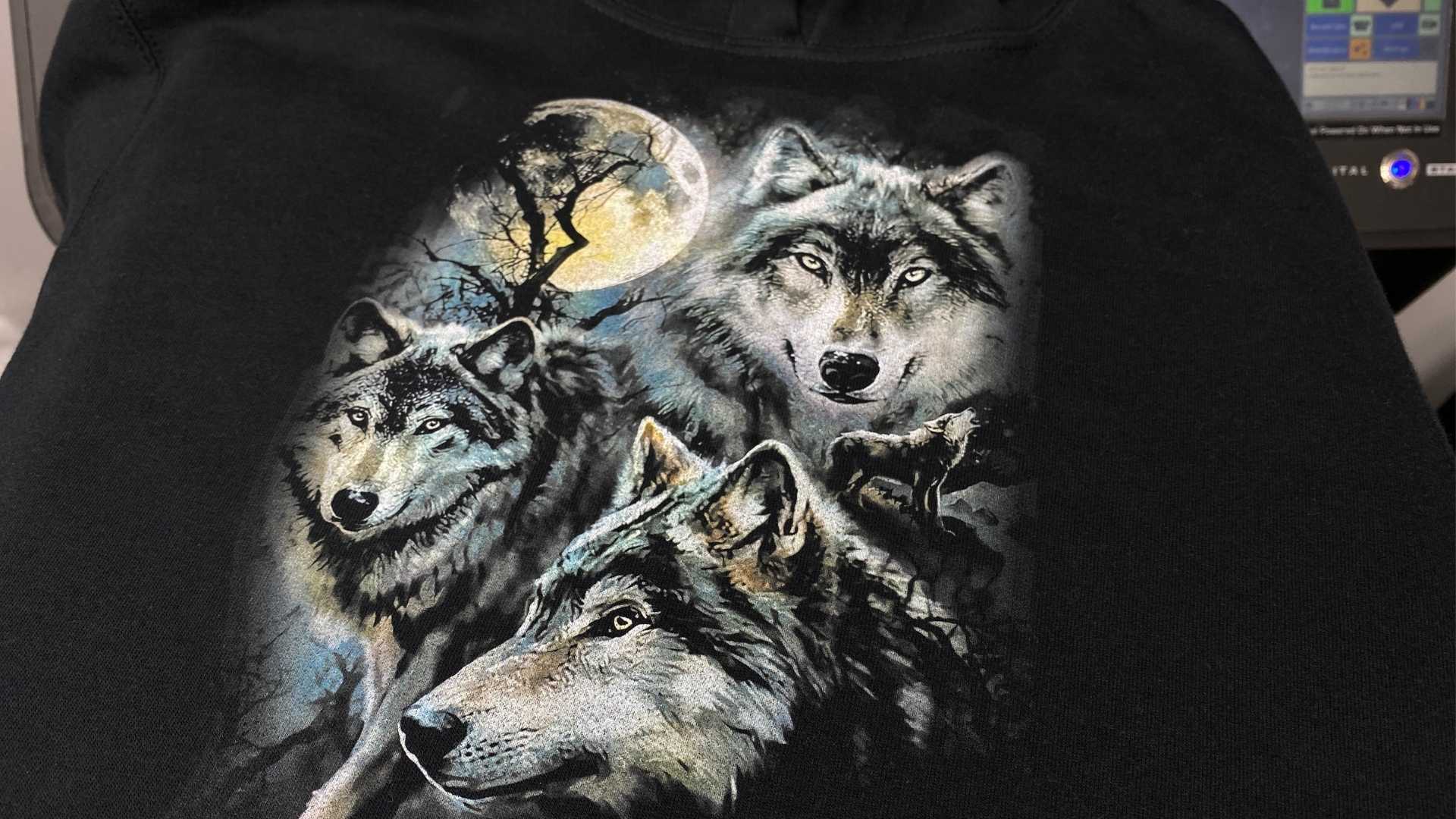
The easiest way to think about cost per print and Direct to garment is that almost any print on a white shirt will cost you less than $1 in ink.
Practically any print on a dark shirt will cost you about $2. (You can find specific numbers on this ROI page)
Here’s how you do direct-to-garment printing:
Why NOT Choose a Direct to Garment Printer?
The disadvantage to a direct-to-garment printer vs. the DigitalHeat FX and Roland BN-20 printers is versatility.
Direct to garment printers make amazing images on 100% cotton shirts and other natural materials. And some 100% white polyester shirts. If you stick to these, you’ll get incredible images.
They will also print good images onto some blends and tri-blends, too – there’s a lot of difference in how these materials are made, and each one prints a little differently. You’ll just need to test them for the best results.
No dark polyester, please.
The Roland BN-20 and all 3 DigitalHeat FX printers make transfers that can be applied to all the fabrics that don’t work well for direct-to-garment printing.
Another reason is the price of a direct-to-garment printer.
You can find these printers that start around $16,000, but some mandatory accessories bring your typical purchase to between $20K and $25K.
Here’s where many people end up financing their startup!
Even the priciest end of that range can finance for as little as $525/month (depending).
But most people with a direct-to-garment printer make between $12 and $20/shirt, so selling 50 shirts per month can cover your payment.
Check that ROI page again for details.
Is a vinyl cutter a “t-shirt printer”?
For our purposes, yes! Because you can make custom t-shirts with them, we consider them as part of the t-shirt printer lineup.
Any vinyl cutter can be used to make custom t-shirts. You just need to use “HTV” or heat transfer vinyl instead of the alternatives.
Using HTV, like the Triton brand (which you can find here: HTV) lets you cut out your design but has an adhesive back. The heat and pressure activate the adhesive by way of a heat press machine.
This light, thin, high-quality heat transfer vinyl is used on everything from logo tees to names on sports jerseys and jackets.
Why use HTV and a vinyl cutter?
It’s another inexpensive solution to start your custom t-shirt business.
You’ll want to avoid the CHEAPEST cutters like the Cricut because of output size, speed and durability.
Very much like comparing a home sewing machine to a commercial one, the home version isn’t made to run ALL day. The components are designed for hobby use. And how many shirts you can make in an hour doesn’t matter at all to a hobbyist, but it will to YOU!
Having said that, you can get a 15” professional vinyl cutter with startup supplies for about $1,400. Just add a good quality heat press, and you have everything you’ll need.
The most popular bundle: Graphtec 15” Cutter + heat press is about $2,400 or only $66/month if you need to finance.
And you can do glitter vinyl.
And sign vinyl, and sticker vinyl, and more.
Plus, supply costs per design are very low, and quality is very high!
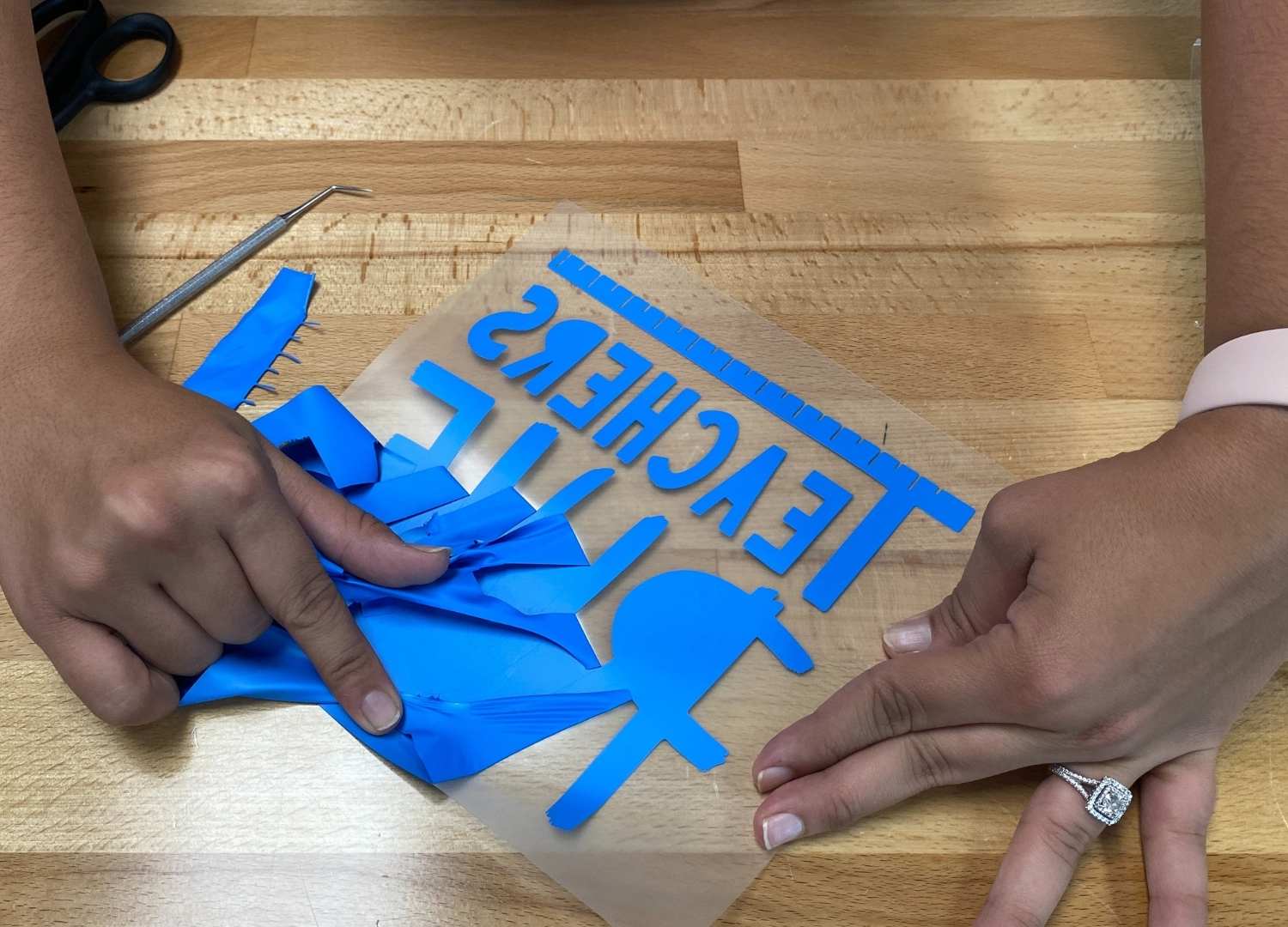
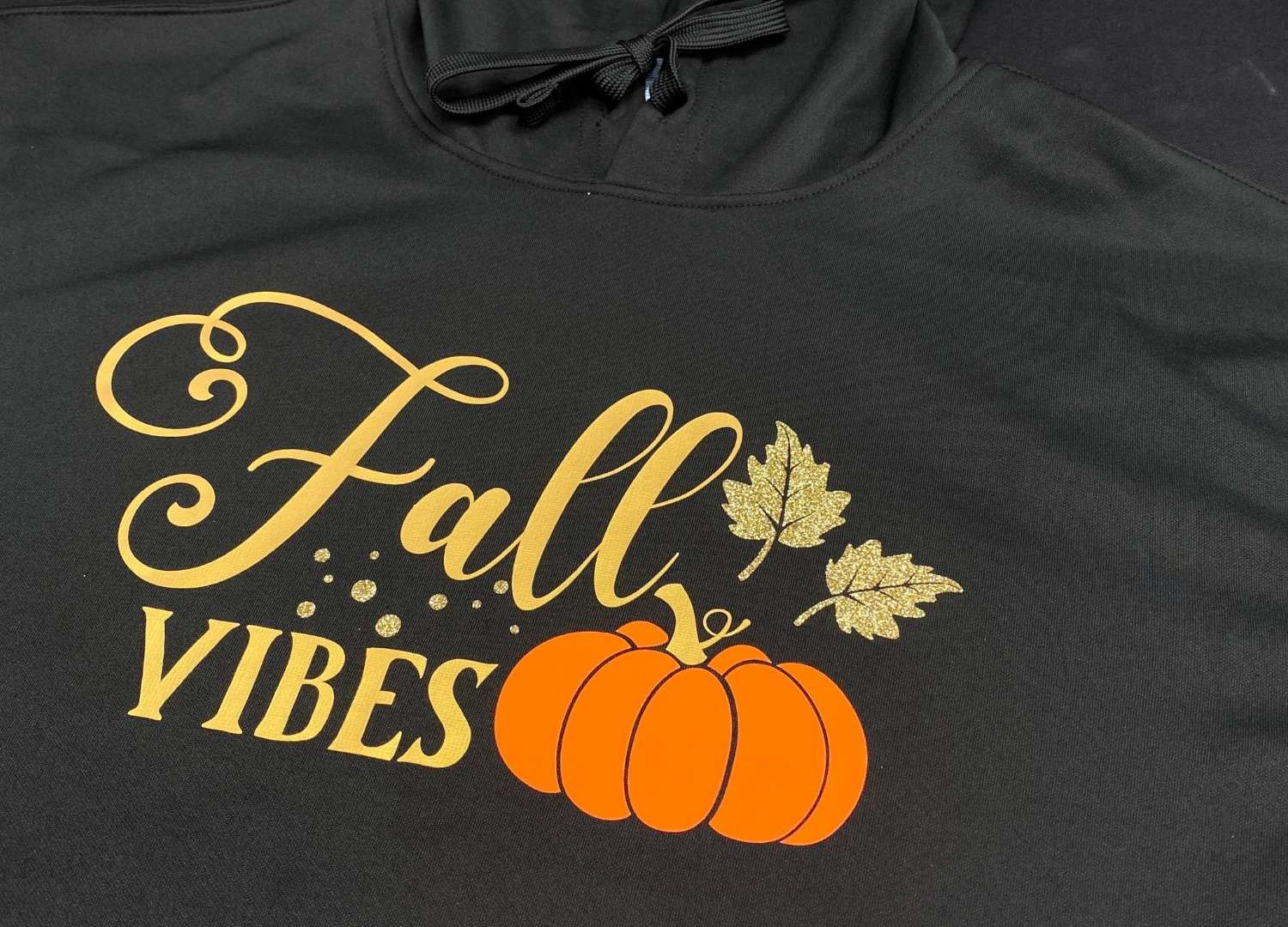
Why NOT Choose HTV?
Short answer: you should always choose HTV.
It will only do one color at a time. You can layer it to get two or more, but it IS more of a process than other technologies.
So if you’re in the full-color photo or color graphic t-shirt business, this just won’t work for you as a PRIMARY machine. But every custom t-shirt business should have one.
Because there’s no better way to quickly and easily do a big lettering design, and there are lots of big lettering designs.
Think names on sports jersey backs.
HTV is the quickest, cheapest, and easiest way to get a one-color design onto a shirt. For a great price. With no wait time or set up costs.
Doing glitter is extremely tough with any other technology too.
Another reason you should own one of these systems too? It’s perfect for mixed media.
Check out this video of using glitter vinyl and embroidery to do a custom trucker’s cap. Perfect example:
For the BIG Volume T-Shirt Shops - High Volume Direct to Film Printers
In 2021 the DigitalHeat FX brand, which had been white toner printers ONLY up until then, added direct to film printers.
There are some BIG differences between those white toner products we discussed already and these new DTF Printers. In fact, this is the first and only printer option so far that is designed specifically for high volume.
And it’s the BIGGEST printer in our line up as well.
The 2 current models are based on a 24” roll printer, and they have a hotmelt powder application unit and belt dryer built into the system. This commercial product is made for production shops, so while all the printers so far can be set up in a back room or office, these have more commercial requirements.
Here are a few other differences between the DigitalHeat FX White Toner Printers and the DTF-24H2 and DTF-24H4:
- DigitalHeat FX Direct to Film (DTF) Printers print on a large roll of transfer material. White Toner Printers print 1 sheet at a time.
- Direct to Film Printers produce finished transfers, ready to apply to a garment. All you have to do is cut them out of the roll of material. The white toner transfers need to be “married” to the glue sheets by heat press before it’s ready to apply.
- Because it’s printed on a 24” roll of material you can produce between 100 and 300 full sized LARGE shirt front transfers per hour.
- There’s a dryer built into the system, so you won’t need a heat press to MAKE the transfers, only to apply them.
- DTF transfers STRETCH
- White toner printers can be used to make more things. Like promotional products, custom mugs, etc. You’ll only use these DTF printers to make transfers to apply to apparel.
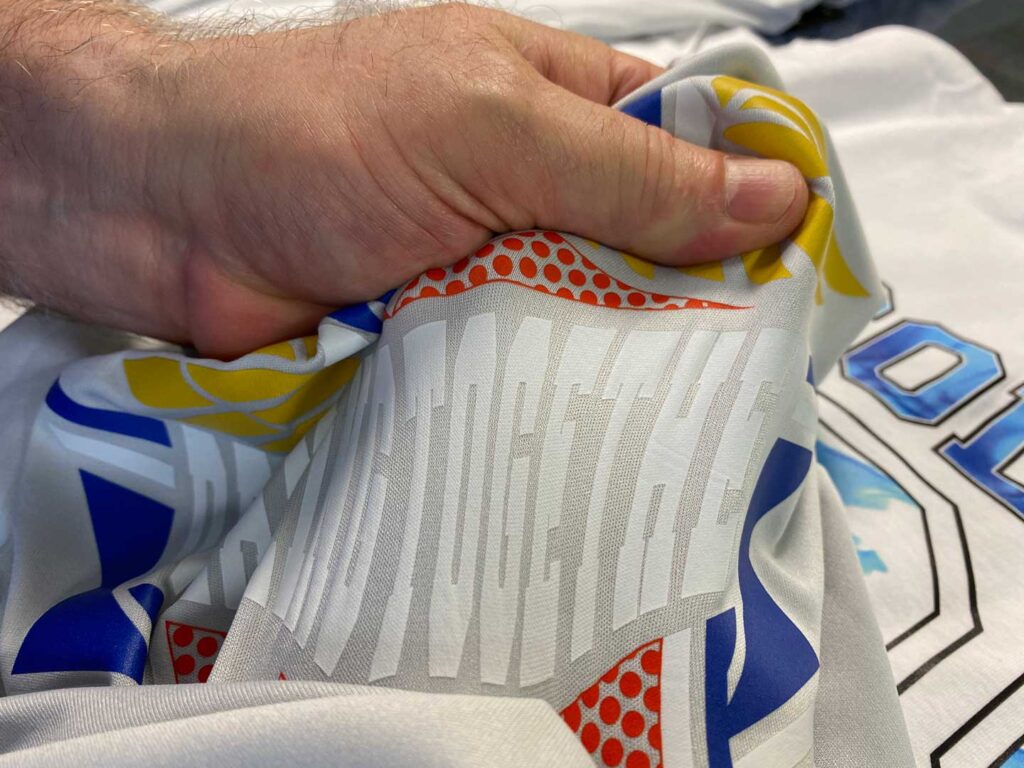
Why use Direct to Film Printers:
- You need to print 100+ transfers per hour
- DTF Transfers can be applied to any fabric – they even stretch
- Application time is only :15!
- Long-lasting, no cracking prints
- You sell the transfers and the completed apparel
- You want to replace your screen printing equipment
Reasons you may not want to consider high volume DTF:
- Regular maintenance is absolutely required
- You don’t have the space. They are BIG. The 24H2 + the Applicator and Dryer is 67.5” X 131”
- $25,000 is the entry level right now. If you don’t NEED this kind of performance you may want to choose something more cost effective to start.
- You need to print low quantities on the spot. Because it IS digital printing you can still produce just one or 2 designs, but as part of a long run. Just not feasible to print 2 just for that day or hour.
- They like to be used. So, while you can just print 1 hour per week, it operates better if you’re using in more regularly.
Articles on DTF
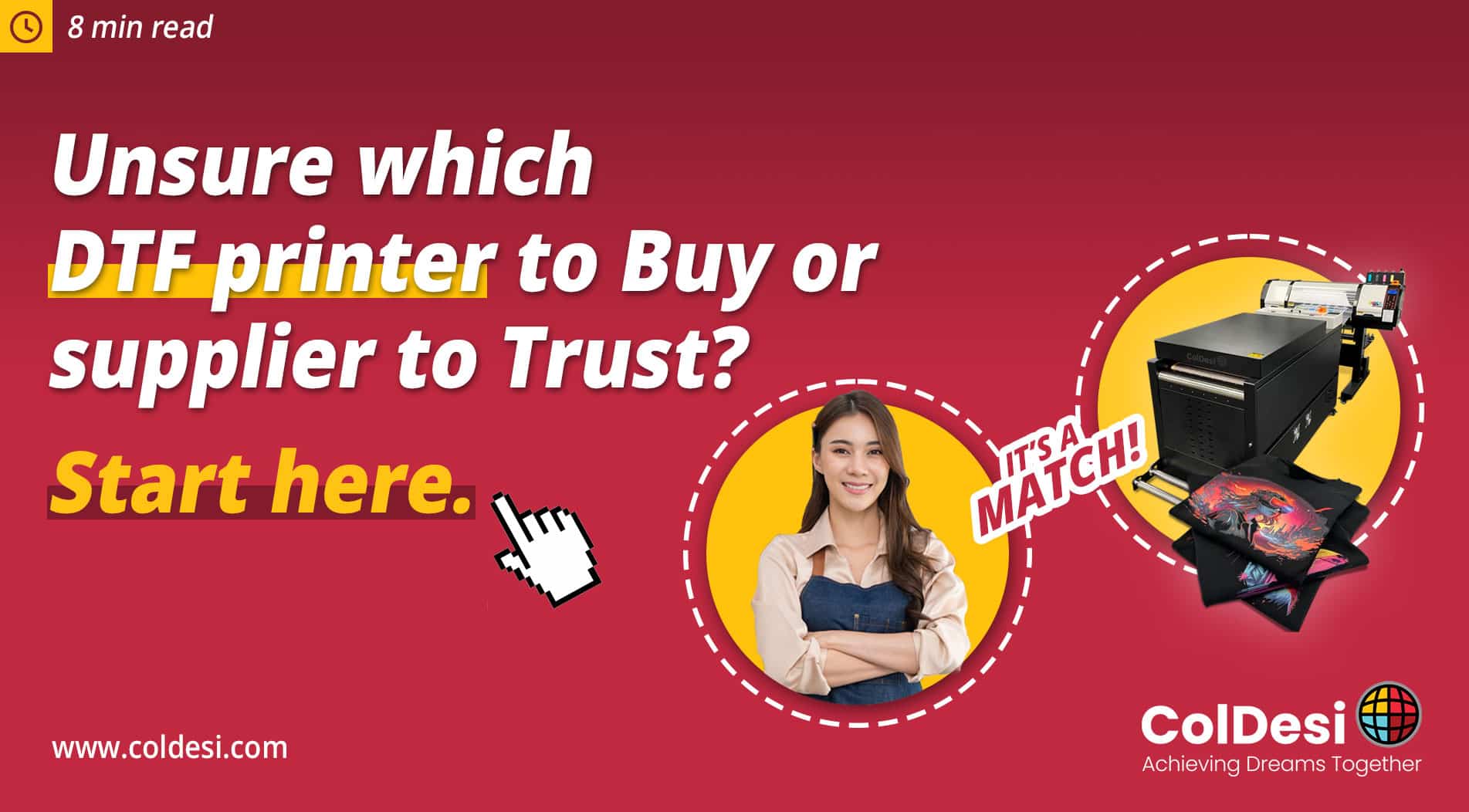
Reputable DTF Printers: Why ColDesi Is the Trusted Choice for Established Customization Businesses
Thinking about getting a DTF printer but unsure which model or supplier to trust? With so many options out there, it’s easy to get lost.
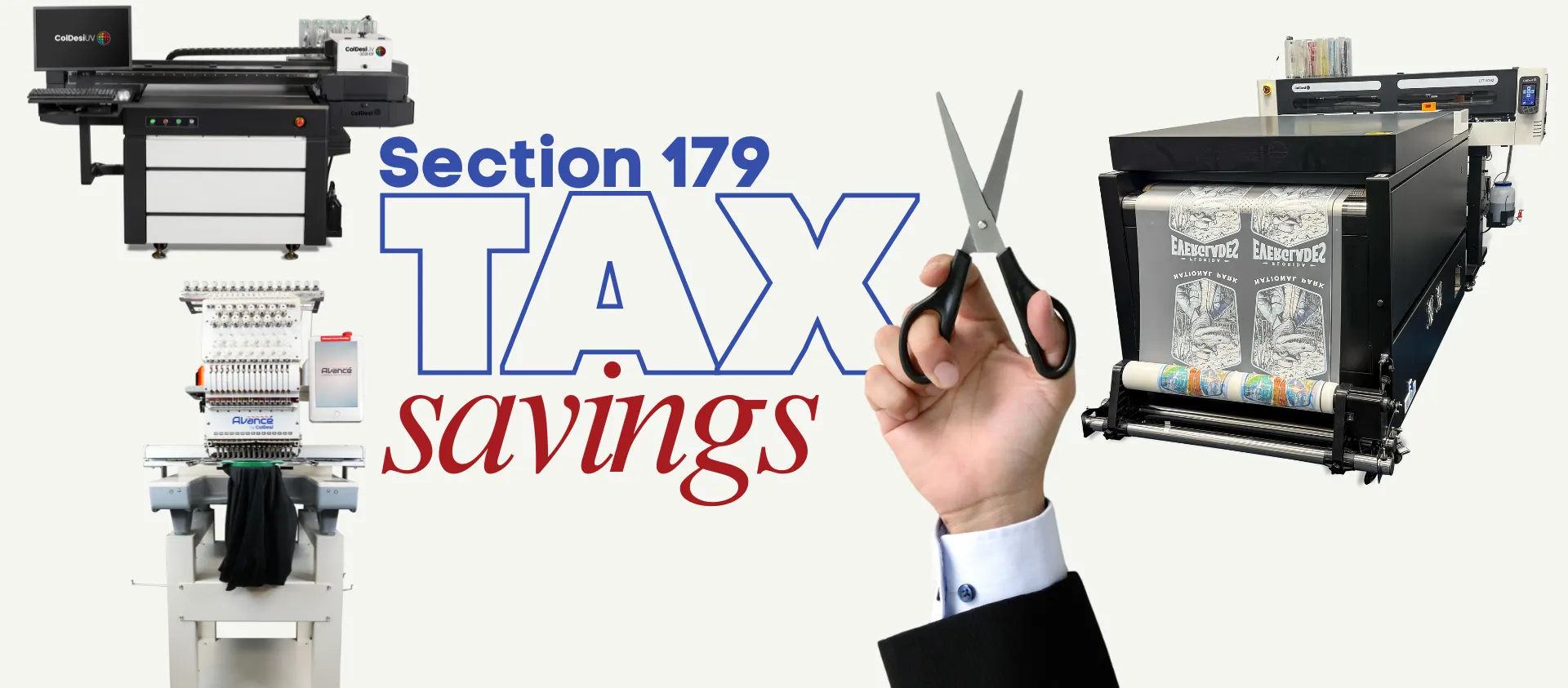
Section 179 Customization Equipment Tax Savings
How to Maximize Your Business Investment in 2025 For customization business owners upgrading or adding equipment is not always about keeping up with demand. It

The Professional Standard for Customization Consumables
Performance Begins with the Right Materials At ColDesi, we’ve helped thousands of businesses grow from single-operator setups to full-scale production environments. The most successful share
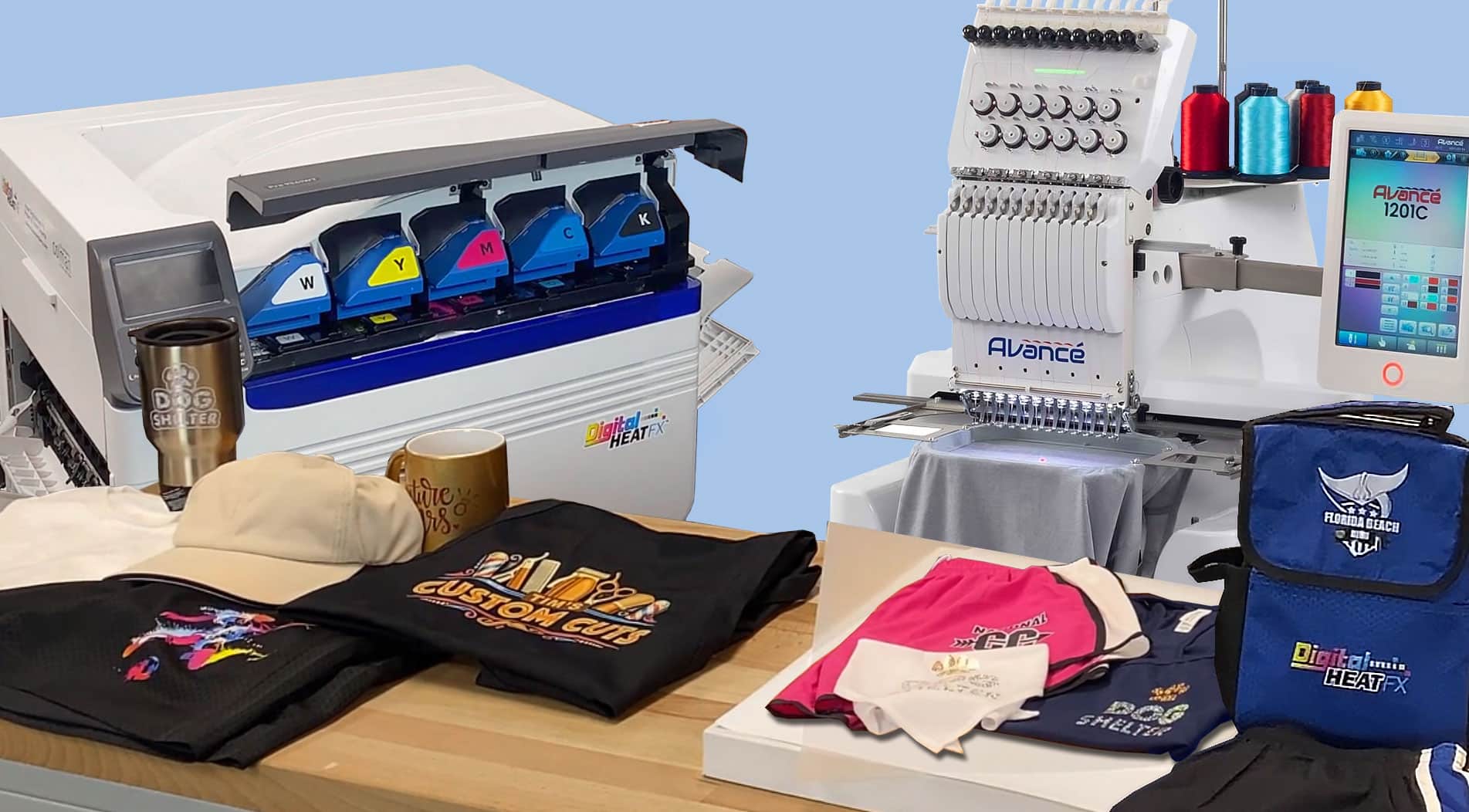
White Toner Printer for Embroidery Business
Have you ever thought about adding a white toner printer to your embroidery business? You have—probably more than once. But something always gets in the
How Does Financing Affect Price?
Because there’s so much profit built into the custom t-shirt business, financing is a BIG consideration.
People that we asked who own and operate the t-shirt printers make between $10 and $25/shirt – with most of them being in the $12-$15 range.
So for every 7 or 8 shirts, you sell you can make around $100.
That means that the monthly payments for even the most expensive bundle for DTG Printers can be paid for if you sell 30-50 shirts per month.
A DigitalHeat FX system might be 15 or 20 shirts per month. And so on.
Now, how important is the difference in cost from one system to another?
Summing it all up about choosing your t-shirt printer
The table shown in this article is packed with as much information on cost and financing as possible.
But even with all this information, you should consider these three things:
